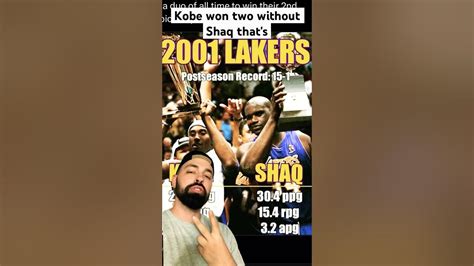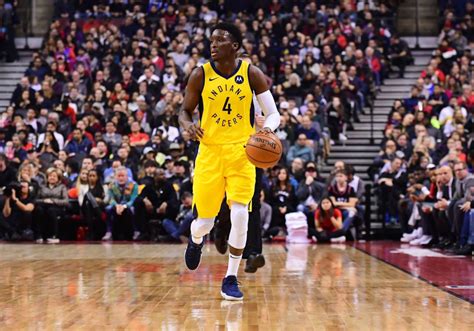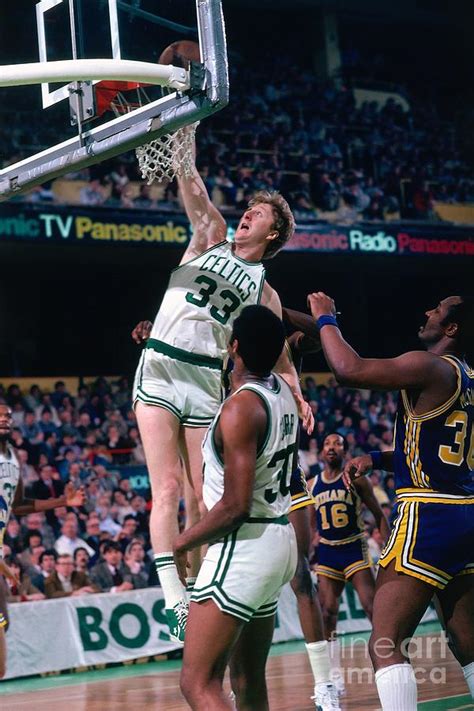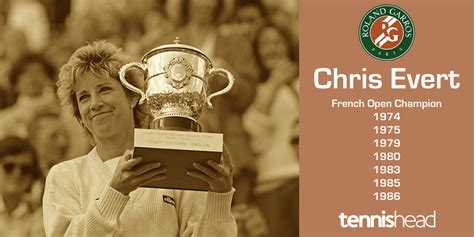
Shaquille O’Neal, the NBA legend, has debunked a long-standing rumor that he had women lining up outside his hotel room during his playing days, admitting in a recent interview that the story was exaggerated.
Shaquille O’Neal, one of basketball’s most dominant and charismatic figures, has finally addressed a persistent rumor that has followed him throughout his illustrious career: the alleged lines of women outside his hotel room during road trips. In a candid interview, O’Neal set the record straight, admitting that while he certainly enjoyed the attention, the stories of lengthy queues of women vying for his attention were largely overblown. This revelation provides a rare glimpse into the personal life of the NBA icon, stripping away some of the mythology that has surrounded him.
“That part’s a myth,” O’Neal confessed, addressing the decades-old speculation. While he acknowledged that he was never short on female admirers, he clarified that the image of orderly lines stretching down hotel hallways was a significant embellishment. “I’m not going to sit here and BS you,” he stated, emphasizing his desire to be truthful. “Was I a guy that had a lot of girls? Yes. Did I have lines of girls? No.”
O’Neal’s admission offers a more nuanced perspective on the life of a superstar athlete, highlighting the pressures and temptations that come with fame while also underscoring the importance of distinguishing between reality and hyperbole. The revelation also prompts reflection on the broader cultural context of celebrity, the media’s role in shaping narratives, and the public’s fascination with the personal lives of athletes and entertainers.
The rumors surrounding O’Neal’s romantic life were fueled by his larger-than-life personality and his dominant presence both on and off the court. Standing at 7’1″ and weighing over 300 pounds, O’Neal was an imposing figure who commanded attention wherever he went. His athletic prowess, combined with his charismatic demeanor and playful sense of humor, made him a natural celebrity. As his fame grew, so did the stories about his exploits, both real and imagined.
The narrative of women lining up outside O’Neal’s hotel room became a recurring anecdote in sports media and popular culture. It reinforced the image of O’Neal as a larger-than-life figure who lived a life of excess and indulgence. While O’Neal himself often played along with the jokes, the underlying assumption was that the stories were at least partially true.
However, O’Neal’s recent admission suggests that the reality was more complex. While he acknowledges that he had numerous female admirers, he insists that the idea of organized lines of women waiting for him is a fabrication. This revelation challenges the prevailing narrative and invites a more critical examination of the way celebrity culture shapes our perceptions of athletes and entertainers.
The admission also raises questions about the responsibility of the media in reporting on the personal lives of public figures. In an era of sensationalism and clickbait, it is easy for rumors and exaggerations to spread quickly, often without proper verification. The story of O’Neal’s alleged hotel room lines serves as a cautionary tale about the dangers of perpetuating unsubstantiated claims, even when they are presented as harmless anecdotes.
For O’Neal, addressing this rumor is part of a broader effort to be more transparent and authentic with his fans. In recent years, he has become increasingly open about his personal struggles and challenges, including his divorce, his weight issues, and his health concerns. By sharing his experiences, O’Neal hopes to connect with his audience on a deeper level and inspire others to overcome their own obstacles.
O’Neal’s career spanned nearly two decades, during which he played for six different NBA teams and won four NBA championships. He was known for his dominant inside play, his thunderous dunks, and his colorful personality. Off the court, O’Neal has been a successful entrepreneur, actor, and television personality. He has starred in numerous films and television shows, and he has endorsed a wide range of products.
Despite his many accomplishments, O’Neal has also faced his share of criticism. He has been accused of being selfish, lazy, and undisciplined at times. He has also been criticized for his weight and his conditioning. However, O’Neal has always been able to brush off the criticism and maintain a positive attitude.
O’Neal’s ability to laugh at himself and to not take himself too seriously has been one of his greatest strengths. He has always been willing to poke fun at his own flaws and shortcomings, which has made him relatable to fans of all ages. This self-deprecating humor is evident in his recent admission about the hotel room lines. By acknowledging that the rumors were exaggerated, O’Neal is able to defuse the situation and show that he doesn’t take himself too seriously.
The revelation also provides an opportunity to reflect on the changing landscape of celebrity culture. In the past, athletes and entertainers were often shielded from public scrutiny, and their personal lives were largely kept private. However, in the age of social media and 24-hour news cycles, it is increasingly difficult for celebrities to maintain their privacy. As a result, they are often forced to address rumors and controversies head-on.
O’Neal’s decision to address the hotel room rumor is a sign of the times. He recognizes that he can no longer control the narrative surrounding his personal life, so he has chosen to take control of the story himself. By being open and honest with his fans, he hopes to build trust and credibility.
The impact of O’Neal’s admission remains to be seen. It is possible that some fans will be disappointed to learn that the stories of his hotel room lines were exaggerated. However, it is also possible that others will appreciate his honesty and his willingness to set the record straight. Ultimately, O’Neal’s legacy will be determined by his accomplishments on the court and his contributions to the sport of basketball. But his recent admission serves as a reminder that even the most legendary figures are still human, with their own flaws and insecurities.
The interview in which O’Neal made this revelation was wide-ranging, covering various aspects of his life and career. He discussed his early years, his time in the NBA, his post-basketball ventures, and his personal relationships. He also talked about his struggles with weight and his efforts to maintain a healthy lifestyle.
Throughout the interview, O’Neal was candid and reflective. He acknowledged his mistakes and shortcomings, and he expressed gratitude for the opportunities he has been given. He also spoke about his desire to give back to the community and to help others achieve their dreams.
O’Neal’s transformation from a dominant basketball player to a successful businessman and media personality is a testament to his versatility and his entrepreneurial spirit. He has shown that he is capable of excelling in a variety of fields, and he has inspired countless people to pursue their passions.
His willingness to address the hotel room rumor, even after all these years, is further evidence of his commitment to authenticity and transparency. By setting the record straight, he is not only correcting a long-standing misconception but also demonstrating his respect for his fans and his desire to be honest with them.
The broader implications of O’Neal’s admission extend beyond the realm of celebrity culture. It serves as a reminder that we should always be skeptical of the stories we hear, especially when they involve public figures. It also highlights the importance of critical thinking and the need to verify information before accepting it as fact.
In a world where misinformation and fake news are rampant, O’Neal’s example is particularly relevant. By challenging the prevailing narrative and presenting his own perspective, he is encouraging others to do the same. He is reminding us that we all have a responsibility to be informed and to question the information we receive.
O’Neal’s legacy will undoubtedly continue to evolve in the years to come. He is a dynamic and multifaceted figure who is constantly reinventing himself. Whether he is starring in a film, hosting a television show, or mentoring young athletes, he will continue to entertain and inspire audiences around the world.
And while the stories of hotel room lines may fade into the background, his honesty and his willingness to be himself will remain a lasting part of his legacy. It’s this openness that will cement his place not only as a basketball legend but also as a cultural icon who has touched the lives of millions. The acknowledgment of the exaggerated tales humanizes him further, demonstrating that behind the larger-than-life persona is an individual who values authenticity and truth. This recent interview and his candor contribute to a more complete and nuanced understanding of Shaquille O’Neal, the man.
O’Neal’s comments also touched upon the evolving dynamics between athletes and the media. In past decades, athletes often had limited control over their public image, relying heavily on sports reporters and public relations teams to shape their narratives. However, the rise of social media has empowered athletes to communicate directly with their fans, bypass traditional media outlets, and control their own stories.
O’Neal has embraced this shift, using his social media platforms to share his thoughts, engage with fans, and promote his various ventures. His willingness to address the hotel room rumor in an interview suggests that he is comfortable using both traditional and social media channels to manage his public image and set the record straight on issues that are important to him.
The contrast between the exaggerated stories of his hotel room lines and the reality he describes highlights the potential for misrepresentation and distortion in media coverage. While the media plays an important role in informing the public about athletes and entertainers, it is also prone to sensationalism and exaggeration, particularly when it comes to stories about their personal lives.
O’Neal’s experience serves as a reminder that we should always approach media coverage with a critical eye, recognizing that the stories we read and hear may not always be accurate or complete. It also underscores the importance of giving public figures the opportunity to speak for themselves and to share their own perspectives on the events that shape their lives.
Looking ahead, it is likely that O’Neal will continue to be a prominent figure in the public eye. He has a wide range of projects and interests, and he shows no signs of slowing down. Whether he is working as a sports analyst, pursuing his business ventures, or giving back to the community, he will undoubtedly continue to make a positive impact on the world.
And while the stories of hotel room lines may fade into distant memory, his legacy as one of the greatest basketball players of all time will endure. His dominance on the court, his charismatic personality, and his willingness to be himself have made him an icon to millions of fans around the world.
Moreover, this incident underscores the complex relationship between fame, perception, and reality. O’Neal, through his own admission, highlights the ease with which a narrative can be amplified and reshaped, particularly when it involves a celebrity. This is a powerful reminder of the importance of critical analysis and discernment when consuming media, reinforcing the need to question and verify information rather than accepting it at face value. O’Neal’s story is not just about debunking a myth; it is also about the broader implications of media representation and its potential to distort reality. It challenges us to think critically about the stories we hear, the narratives we construct, and the impact they have on our understanding of the world and the people in it. In a society saturated with information, O’Neal’s experience serves as a valuable lesson in media literacy and the importance of maintaining a healthy skepticism toward even the most widely circulated stories.
This clarification also adds a layer of depth to O’Neal’s public persona. By admitting that the rumors were exaggerated, he presents himself as more relatable and authentic, someone who is not immune to the pressures and temptations of fame but who is also grounded in reality. This humanizing revelation makes him more accessible to fans, allowing them to connect with him on a more personal level. It also reinforces the idea that even larger-than-life figures are not defined solely by their achievements or the myths that surround them, but also by their ability to be honest and self-aware. O’Neal’s willingness to address this long-standing rumor demonstrates his commitment to transparency and his desire to present a more accurate portrayal of himself to the public. In a world where celebrity images are often carefully curated and controlled, O’Neal’s candor is a refreshing reminder of the importance of authenticity and self-expression.
Ultimately, Shaquille O’Neal’s admission about the hotel room lines is more than just a celebrity anecdote. It is a reflection on the nature of fame, the power of media, and the importance of authenticity. By setting the record straight, O’Neal is not only correcting a misconception but also offering a valuable lesson in media literacy and the need to question the narratives we consume. His story serves as a reminder that even the most legendary figures are human, with their own flaws, insecurities, and a desire to be seen for who they truly are.
Frequently Asked Questions (FAQ)
1. What was the rumor about Shaquille O’Neal and hotel room lines?
The rumor, which persisted for many years, claimed that Shaquille O’Neal had long lines of women waiting outside his hotel room during his NBA career. This image contributed to his larger-than-life persona and perceived extravagant lifestyle.
2. What did Shaquille O’Neal say about the rumor?
O’Neal admitted that while he had many female admirers, the idea of orderly lines of women waiting for him outside his hotel room was an exaggeration. He clarified that he was never short on female attention, but the organized queue narrative was a myth. He stated, “Was I a guy that had a lot of girls? Yes. Did I have lines of girls? No.”
3. Why did Shaquille O’Neal address this rumor now?
O’Neal’s decision to address the rumor now is part of a broader effort to be more transparent and authentic with his fans. In recent years, he has become increasingly open about his personal struggles and challenges, and addressing this rumor is another step in that direction. He may also be trying to control the narrative surrounding his personal life and present a more accurate portrayal of himself to the public.
4. What impact did this rumor have on Shaquille O’Neal’s image?
The rumor reinforced the image of O’Neal as a larger-than-life figure who lived a life of excess and indulgence. While O’Neal often played along with the jokes, the underlying assumption was that the stories were at least partially true. This contributed to the mythology surrounding his celebrity.
5. What are the broader implications of Shaquille O’Neal’s admission?
O’Neal’s admission serves as a reminder to be skeptical of the stories we hear, especially when they involve public figures. It highlights the importance of critical thinking and the need to verify information before accepting it as fact. It also sheds light on the responsibility of the media in reporting on the personal lives of public figures and the potential for sensationalism and exaggeration. Furthermore, it provides insight into the evolving relationship between athletes, the media, and the public in the age of social media.
6. How has social media changed the way athletes control their image?
Social media has empowered athletes to communicate directly with their fans, bypass traditional media outlets, and control their own stories. This allows them to present their own perspectives and correct any misrepresentations.
7. What does this reveal about celebrity culture?
It reveals how easily narratives can be amplified and reshaped, particularly when it involves a celebrity. This is a reminder of the importance of critical analysis and discernment when consuming media, reinforcing the need to question and verify information rather than accepting it at face value.
8. How does O’Neal’s statement affect his public persona?
By admitting the exaggeration, O’Neal presents himself as more relatable and authentic, someone who is not immune to the pressures and temptations of fame but who is also grounded in reality. This humanizing revelation makes him more accessible to fans.
9. What is the significance of O’Neal addressing this rumor after so many years?
Addressing the rumor after so many years shows O’Neal’s commitment to transparency and his desire to present a more accurate portrayal of himself to the public. It demonstrates his willingness to confront long-standing misconceptions and set the record straight.
10. How does this story relate to media literacy?
This story is a valuable lesson in media literacy, emphasizing the need to question the narratives we consume. O’Neal’s experience challenges us to think critically about the stories we hear, the narratives we construct, and the impact they have on our understanding of the world and the people in it.
11. What other aspects of his life did O’Neal discuss in the interview?
O’Neal discussed his early years, his time in the NBA, his post-basketball ventures, his personal relationships, his struggles with weight, and his efforts to maintain a healthy lifestyle.
12. How did O’Neal describe his approach to the interview?
O’Neal described his approach as candid and reflective, acknowledging his mistakes and shortcomings, and expressing gratitude for the opportunities he has been given. He also spoke about his desire to give back to the community.
13. What does this incident say about the responsibility of the media?
It underscores the responsibility of the media to verify information and avoid sensationalism when reporting on the personal lives of public figures.
14. What other careers has O’Neal pursued after retiring from the NBA?
O’Neal has been a successful entrepreneur, actor, and television personality. He has starred in numerous films and television shows, and he has endorsed a wide range of products.
15. How has O’Neal dealt with criticism throughout his career?
O’Neal has been able to brush off criticism and maintain a positive attitude. He has been willing to poke fun at his own flaws and shortcomings, which has made him relatable to fans of all ages.
16. In what ways does O’Neal contribute to the community?
O’Neal has expressed a desire to give back to the community and to help others achieve their dreams through various philanthropic endeavors and mentorship programs.
17. How does this story reflect the changing nature of celebrity?
It reflects how the rise of social media has given celebrities more control over their image and narrative, allowing them to bypass traditional media outlets.
18. What lessons can be learned from O’Neal’s experience?
Lessons include the importance of critical thinking, media literacy, authenticity, and the need to question information before accepting it as fact.
19. What is O’Neal’s legacy beyond basketball?
O’Neal’s legacy extends beyond basketball to his contributions as an entrepreneur, media personality, and philanthropist. He has entertained and inspired audiences around the world.
20. How does this admission affect O’Neal’s place as a cultural icon?
The admission cements his place as a cultural icon who is not only a basketball legend but also a relatable and authentic figure who has touched the lives of millions.
21. How does O’Neal use humor to connect with people?
His self-deprecating humor makes him approachable and relatable, allowing fans to connect with him on a more personal level. By making fun of his own flaws, he breaks down barriers and creates a sense of camaraderie.
22. Why is it important to distinguish between myth and reality when discussing celebrities?
Distinguishing between myth and reality ensures that we understand celebrities as multifaceted individuals rather than one-dimensional caricatures. It also encourages a more nuanced and informed perspective on their lives and achievements.
23. What is the long-term significance of this revelation?
The long-term significance lies in its contribution to a more accurate and complete understanding of Shaquille O’Neal, reinforcing the value of authenticity and transparency in public life.
24. What does O’Neal’s story teach us about the power of perception?
O’Neal’s story teaches us that perception can be easily distorted, and that it is essential to question the narratives presented to us, particularly when they involve public figures. It emphasizes the need to look beyond the surface and consider the underlying factors that shape our understanding of people and events.
25. How does this interview contribute to O’Neal’s overall image as a role model?
By being honest and candid about his experiences, O’Neal reinforces his image as a role model who values authenticity and integrity. His willingness to address past rumors demonstrates his commitment to setting a positive example for others and inspiring them to be true to themselves.









